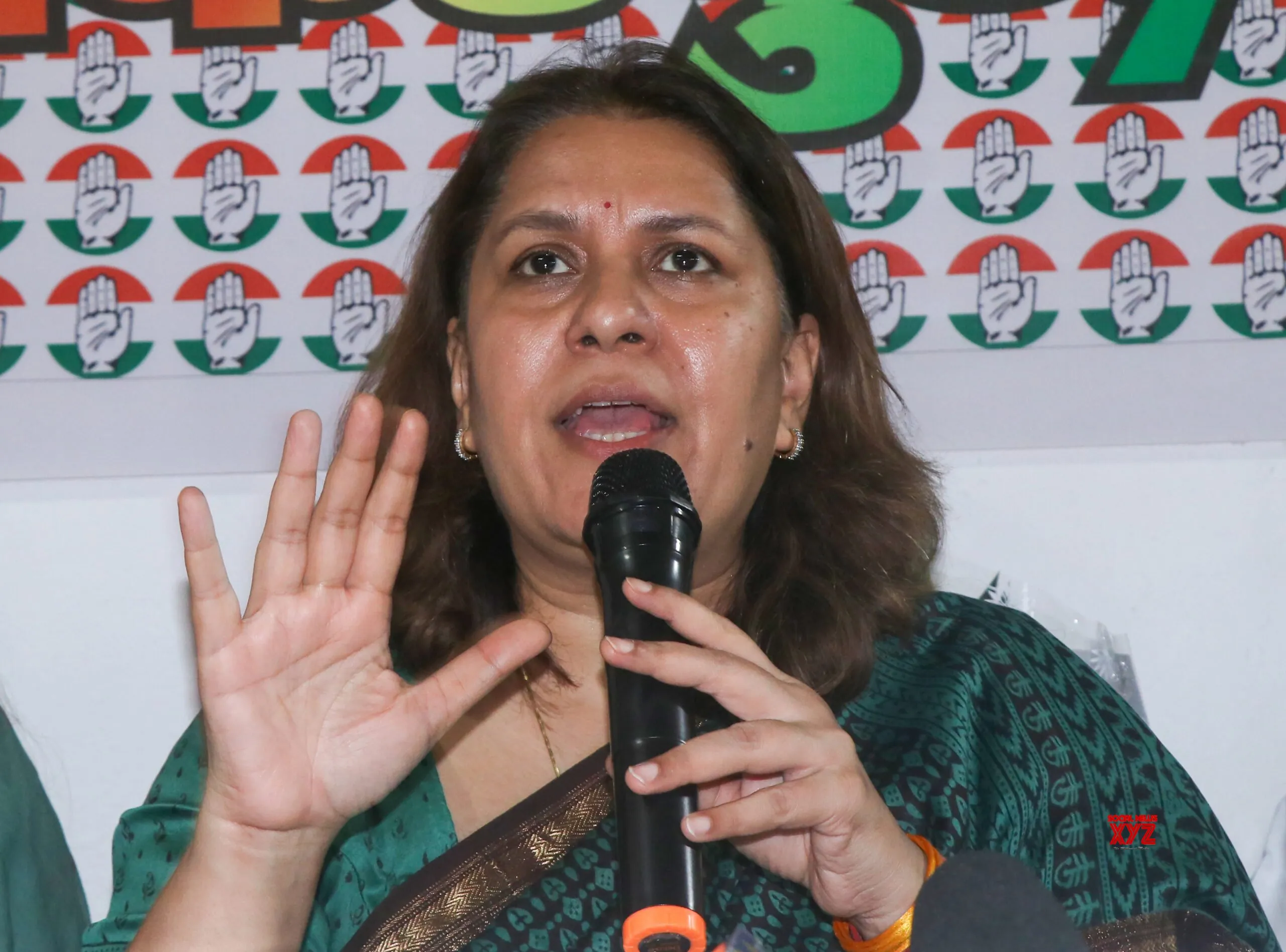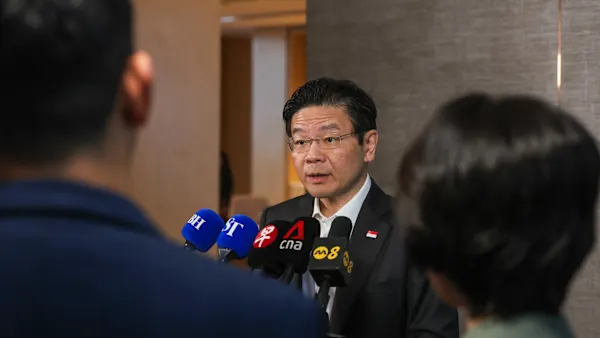Copyright Anchorage Daily News

LOS ANGELES – California Democrats’ effort to block President Trump’s agenda by increasing their party’s numbers in Congress was overwhelmingly approved by voters on Tuesday. The statewide ballot measure will reconfigure California’s congressional districts to favor more Democratic candidates. The Democratic-led California Legislature placed the measure on the Nov. 4 ballot, at Gov. Gavin Newsom’s behest, after Trump urged Texas and other GOP-led states to modify their congressional maps to favor their party members, a move designed to keep the U.S. House of Representatives in Republican control during his final two years in office. Proposition 50 was the sole item on the statewide, special-election ballot Tuesday. Supporters hope the ballot measure has become a referendum about Trump, who remains extremely unpopular in California, while opponents call Prop. 50 an underhanded power grab by Democrats. Supporters of the proposal had the edge going into Election Day. They vastly outraised their rivals, and Proposition 50 led in recent polls. California voters have been inundated with television ads, mailers and social media posts for weeks about the high-stakes election, so much so that only 2% of the likely voters were undecided, according to a recent UC Berkeley poll cosponsored by The Times. “Usually there was always a rule — look at undecideds in late-breaking polls and assume most would vote no,” said Mark DiCamillo, director of the survey by UC Berkeley’s Institute of Governmental Studies.“But this poll shows there are very few of them out there.” Polls opened at 7 a.m. Tuesday and closed at 8 p.m., although any voter in line at that time is allowed to cast a ballot. The state allows same-day voter registration on Election Day, permitting Californians to cast a conditional ballot that will be counted if their eligibility is verified. Minutes after polls opened, Trump posted on Truth Social that “The Unconstitutional Redistricting Vote in California is a GIANT SCAM in that the entire process, in particular the Voting itself, is RIGGED.” The president, who has not actively campaigned against the proposition aside from a few social media posts, provided no evidence for his allegations. His Department of Justice has said it was sending monitors to polling locations across the state. Secretary of State Shirley Weber pushed back at Trump’s claims along with similar ones made by the president’s press secretary. “If there are irregularities, what are they? Why won’t they identify them? Where exactly is this fraud?” Weber said in a statement. “Ramblings don’t equate with fact.” Voters, some in shorts and flip-flops, waited in line for 30 minutes or more outside a voting center in Huntington Beach on Tuesday afternoon. “Vote no, don’t ruin Huntington Beach!” one man shouted as he left the center. If the ballot measure is approved, the conservative seaside city would fall into a new congressional district that includes Long Beach, but no longer keeps some Republican-rich communities to the south. The politically divided district is currently represented by Dave Min, D-Irvine, but is designed to become a safer seat for Democrats under the new districts created by Proposition 50. Huntington Beach resident Luke Walker, 18, spent time researching the arguments for and against Prop. 50 and came down against it because he believes the redesigned districts will ignore residents’ voices. “You look at the people who will be voting and I don’t think they’ll be properly represented in the new state lines,” Walker said, who predicted that if the ballot measure passes, it would lead to more division.”It’s going to cause more of a rift in society. People are going to start disliking each other even more.” DeAyn Van Eyk, 63, also voted against the proposition on Tuesday, believing Newsom, who is considering running for president in 2028, is using it to further his own political interests. “It sounds like it’s good for him,” she added. “I totally dislike Newsom ... I don’t like Trump as a person — I think he can be a good leader.” Among those who voted for the proposition was Huntington Beach resident Miko Vaughn, 48, who said she wanted Democrats to “level the playing field.” “It’s a temporary thing, but I think it’s important with the changes in Texas that it stays even,” Vaughn said. Though some see Proposition 50 as a proxy war between Trump and Newsom, Vaughn views it differently and said it’s just “against Trump.” “I feel like there’s not much we can do individually, so it does feel good to do something,” Vaughn said, adding that she was impressed to see so many people turn out during a non-presidential election. Californians have been voting for weeks. Registered voters received mail ballots about a month ago, and early voting centers recently opened across the state. More than 7.2 million Californians— 31% of the state’s 23 million registered voters — had cast ballots as of Tuesday morning before the polls opened, according to a voting tracker run by Democratic redistricting expert Paul Mitchell, who drew the proposed districts on the ballot. Democrats are outpacing Republicans, though GOP voters are expected to be more likely to vote in person Tuesday. The gap in early voting has alarmed GOP leaders and strategists. “In California, we already know they surrendered,” Steve Bannon, who served as Trump’s chief strategist for several months during his first term in office, said on his podcast over the weekend. “Huntington Beach, California … it is full MAGA, one of the most important parts of Southern California, yet we’re going to get blown out, I don’t know, by 6, 7, 8, 9, 10 points on the massive redistricting Prop. 50.” Congressional districts traditionally are drawn every decade following the U.S. Census. In California, the boundaries are created by an independent commission created by voters in 2010. But after Trump urged Texas Republicans to alter their House boundaries to boost the number of GOP members in Congress, Newsom and other California Democrats countered by proposing new districts that could add five Democrats to the state’s 52-member delegation. The high-stakes elections attracted tens of millions of dollars and a carousel of prominent politicians, notably former President Obama in support and former California Gov. Arnold Schwarzenegger in opposition, who were featured in ads about the ballot measure, including some that aired during the World Series won by the Dodgers. Democrats who previously championed independent redistricting to remove partisan politics from the process argue that they needed to suspend that political ideal to stop the president from furthering his agenda during his last two years in the White House. Citing public opposition to immigration raids that began in Los Angeles in June, the military being deployed in American cities, and cuts to nutrition assistance programs for low-income families and healthcare programs for seniors and the disabled, Democrats argue that winning control of Congress in next year’s election is critical to stopping the president’s agenda. “Republicans want to steal enough seats in Congress to rig the next election and wield unchecked power for two more years,” Obama says in an ad that includes footage of ICE raids. “With Prop. 50, you can stop Republicans in their tracks. Prop. 50 puts our elections back on a level playing field, preserves independent redistricting over the long term, and lets the people decide. Return your ballot today.” Republicans who oppose the effort countered that Proposition 50 is an affront to the electorate that voted to create an independent redistricting commission. They want to “take us backwards. This is why it is important for you to vote no on Proposition 50,” Schwarzenegger says in an ad that was filmed when he spoke to USC students. “The Constitution does not start with ‘We, the politicians.’ It starts with ‘We, the people.’ ... Democracy — we’ve got to protect it, and we’ve got to go and fight for it.” More than $193 million has been contributed in support of and opposition to Proposition 50, making it one of the costliest ballot measures in state history.



